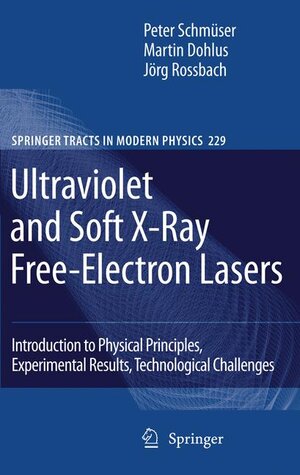Dieser Titel wurde ersetzt durch:
- Free-Electron Lasers in the Ultraviolet and X-Ray Regime (978-3-319-04080-6) - Einband - fest (Hardcover)

×
![Buchcover ISBN 9783540795711]()
From the reviews:
“Many coloured illustrations with detailed comments attracted my attention … . The book … covers both the theoretical description of FEL physics and the experimental methods used to build an FEL and to control the radiation parameters. … very useful for students who are beginning to study FEL physics. It is also valuable for experts, who may look at their research from a different point of view and compare the authors’ way of presenting material with their own way of explaining FEL physics.” (Nikolay Vinokurov, CERN Courier, Vol. 50 (9), November, 2010)Ultraviolet and Soft X-Ray Free-Electron Lasers
Introduction to Physical Principles, Experimental Results, Technological Challenges
von Peter Schmüser, Martin Dohlus und Jörg RossbachThe high scienti? c interest in coherent X-ray light sources has stimulated world-wide e? orts in developing X-ray lasers. In this book a particularly promising approach is described, the free-electron laser (FEL), which is p- sued worldwide and holds the promise to deliver ultra-bright X-ray pulses of femtosecond duration. Other types of X-ray lasers are not discussed nor do we try a comparison of the relative virtues and drawbacks of di? erent concepts. The book has an introductory character and is written in the style of a universitytextbookforthemanynewcomerstothe? eldoffree-electronlasers, graduate students as well as accelerator physicists, engineers and technicians; it is not intended to be a scienti? c monograph for the experts in the ? eld. Building on lectures by one of us (J. R.) at the CERN Accelerator School, and motivated by the positive response to a series of seminars on “FEL t- ory for pedestrians”, given by P. S. within the framework of the Academic Training Program at DESY, we have aimed at presenting the theory of the low-gainandthehigh-gainFELinaclearandconcisemathematicallanguage. Particular emphasis is put on explaining and justifying the assumptions and approximations that are needed to obtain the di? erential equations descr- ing the FEL dynamics. Although we have tried our best to be “simple”, the mathematical derivations are certainly not always as simple as one would like them to be. However, we are not aware of any easier approach to the FEL theory. Some of the more involved calculations are put into the appendices.





